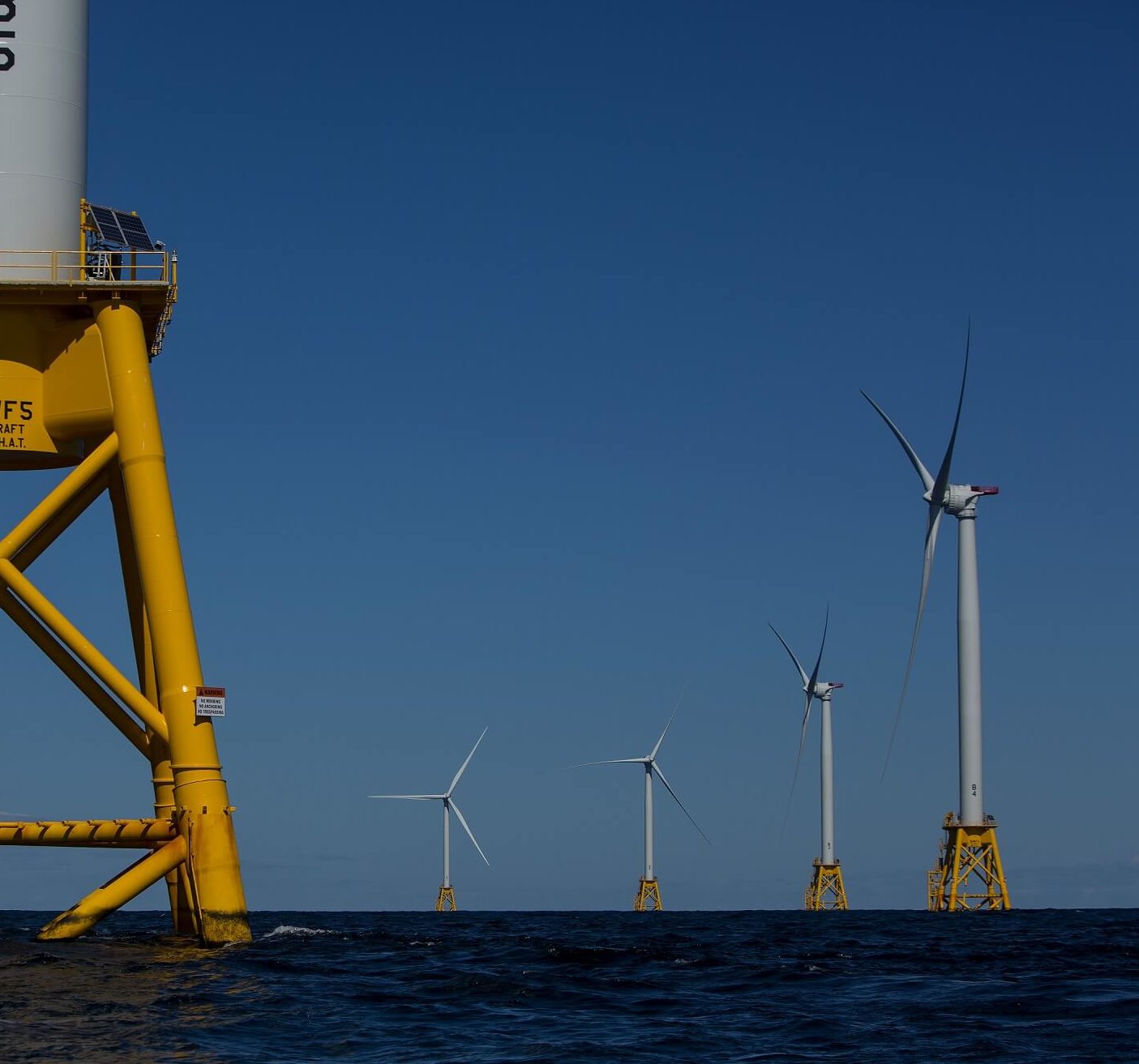Coal and gas are facing a mounting threat to their position in the world’s electricity generation mix, as a result of the spectacular reductions in cost not just for wind and solar technologies, but also for batteries – according to research from Bloomberg New Energy Finance (BNEF).

BNEF’s study of comparative costs worldwide shows an 18% improvement in the competitiveness of onshore wind and solar in the last year, and new and rapidly developing roles for batteries. (Photo: Deepwater Wind | BNEF)
BNEF’s latest report on the levelized costs of electricity, or LCOE, for all the leading technologies finds that fossil fuel power is facing an unprecedented challenge in all three roles it performs in the energy mix – the supply of ‘bulk generation,’ the supply of ‘dispatchable generation,’ and the provision of ‘flexibility.’
In bulk generation, the threat comes from wind and solar photovoltaics, both of which have reduced their LCOEs further in the last year, thanks to falling capital costs, improving efficiency and the spread of competitive auctions around the world.
In dispatchable power – the ability to respond to grid requests to ramp electricity generation up or down at any time of day – the challenge to new coal and gas is coming from the pairing of battery storage with wind and solar, enabling the latter two ‘variable’ sources to smooth output, and if necessary, shift the timing of supply.
In flexibility – the ability to switch on and off in response to grid electricity shortfalls and surpluses over periods of hours – stand-alone batteries are increasingly cost-effective and are starting to compete on price with open-cycle gas plants, and with other options such as pumped hydro.
Elena Giannakopoulou, head of energy economics at BNEF, said: “Our team has looked closely at the impact of the 79% decrease seen in lithium-ion battery costs since 2010 on the economics of this storage technology in different parts of the electricity system. The conclusions are chilling for the fossil fuel sector.
“Some existing coal and gas power stations, with sunk capital costs, will continue to have a role for many years, doing a combination of bulk generation and balancing, as wind and solar penetration increase. But the economic case for building new coal and gas capacity is crumbling, as batteries start to encroach on the flexibility and peaking revenues enjoyed by fossil fuel plants.”
BNEF calculates LCOEs for each technology, taking into account everything from equipment, construction and financing costs to operating and maintenance expenses and average running hours. It found that in the first half of 2018, the benchmark global LCOE for onshore wind is $55 per megawatt-hour, down 18% from the first six months of last year, while the equivalent for solar PV without tracking systems is $70 per MWh, also down 18%. Offshore wind’s LCOE is $118 per MWh in 1H 2018, down 5%.
BNEF’s analysis showed particularly low levelized costs of electricity for onshore wind in India, Brazil, Sweden and Australia, and particularly low levelized costs of electricity for photovoltaics in Chile, India, Australia and Jordan.
Taking India as an example, BNEF is now showing benchmark LCOEs for onshore wind of just $39 per MWh, down 46% on a year ago, and for solar PV at $41, down 45%. By comparison, coal comes in at $68 per MWh, and combined-cycle gas at $93. Wind-plus-battery and solar-plus-battery systems in India have wide cost ranges, of $34-208 per MWh and $47-308 per MWh respectively, depending on project characteristics, but the center of those ranges is falling fast.
Seb Henbest, head of Europe, Middle East and Africa for BNEF, said: “Competitive auctions for new renewable energy capacity have forced developers, equipment providers and financiers to bear down on all the different costs of establishing wind and solar projects.
“Thanks to this and to progressively more efficient technology, we are seeing record-low prices being set for wind and solar, and then those records being broken again and again on a regular basis. This is having a powerful effect – it is changing perceptions.”
BNEF has been analyzing the numbers on levelized costs of electricity for the different technologies since 2009, based on its database of project financings and work by its analyst teams on the cost dynamics in different sectors.
In that nine-year period, the global benchmark LCOE for solar PV without tracking has tumbled by 77%, and that for onshore wind by 38%. LCOEs for older established sources, such as coal, gas, nuclear and large hydro, have seen only very modest reductions, at best, in that time – and in some countries, they have actually increased. BNEF’s lithium-ion battery price index shows a fall from $1,000 per kWh in 2010 to $209 per kWh in 2017.
The implications for the future energy mix of these changing cost dynamics will be discussed at the Bloomberg New Energy Finance Future of Energy Summit in New York on April 9 to 10. For more information about the event, which brings together 1,000 thought-leaders and decision makers from industry, finance and government, visit:https://about.bnef.com/summit/
Filed Under: News, Offshore wind




